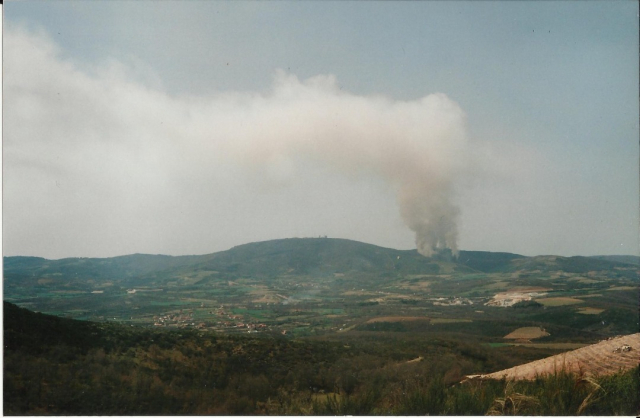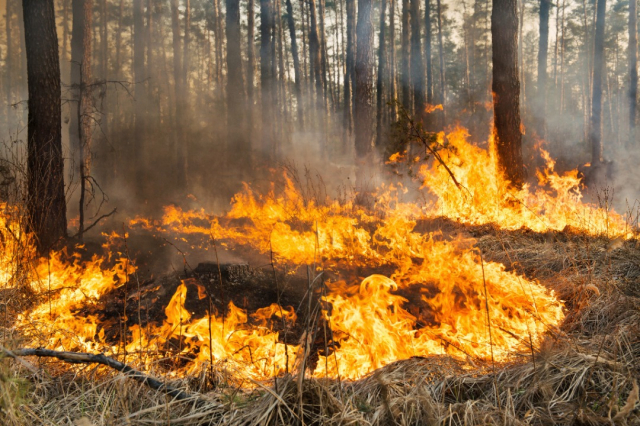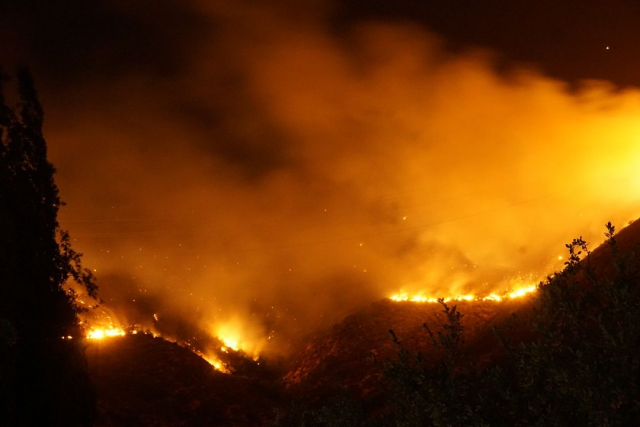What should you do if you find a forest fire on the Camino de Santiago?
With rising temperatures, the risk of forest fires grows. Discover how to act if you find one during the Camino de Santiago
In hot weather, the risk of forest fires increases. These environmental disasters can be avoided and controlled by following various tips, and if they are controlled in time, the evacuation of the people living in the area can be avoided. The areas of Spain with the highest risk of suffering forest fires are Galicia, Castilla y León and Extremadura, in which, in addition to many scattered rural towns, pilgrims are regularly present.
You have to be aware that not all the columns of smoke in the mountains mean that there is a forest fire: it can be a controlled burning of stubble. It is always better to check than to be left wondering, so here are the steps to follow in the event of a forest fire.
Prevention measures
The best against forest fires is, of course, to try to avoid them. For that, we must not light any type of bonfire, only do it if you have the authorization and taking all the security measures to put it out. We must also be careful with lamps and cigarettes, make sure they are well extinguished before leaving the area. Garbage is also a source of risk, so we should not leave anything lying around.
Call 112
It is the emergency phone par excellence, and it should always be our first action in a situation like this. We will have to explain the emergency and our location, and they will surely ask us some questions about the situation. They are responsible for activating the necessary emergency protocol, and the relevant people (firefighters, forest rangers, police) will check if it is a controlled fire.
Cover the airways
Once we have notified the emergency services, it is time to take care of ourselves. As long as you can smell and see the smoke from the fire, we must take measures not to obstruct our breathing. We must breathe through the nose so as not to swallow smoke particles, and cover ourselves with a shirt or a piece of cloth that we have at hand. Ideally, we can moisten the shirt or fabric, so that the dry air and smoke do not affect our throat.
Stay away from the fire
It seems obvious, but with the nerves of the situation and the shock we can forget how to act and stay close to the affected area. Forest fires progress more slowly on downhill slopes, so if it is possible to move in that direction, we will be safer. In addition, we will move faster downhill than uphill.
If you are on a stretch with little slope, you also have to take into account the direction of the wind to go in the opposite direction. You can see which way it is blowing by how the smoke is moving, or the trees around it. The fire advances faster in the direction in which the wind is going, so the logical thing is to advance in the opposite direction. Even so, we must be aware of whether it changes direction or if it has moved embers to another place and created another focus.
Find a safe area
Once we are away from the perimeter of the fire, we must stay in a safe place. For that, the ideal are the areas that do not have fuel material. A firewall is an area that meets these conditions, it can be natural, such as rocky terrain or a water surface, or artificial, such as a road. There the fire cannot advance, so it is a safe area.
The areas that have already been burned are also safe areas, because the fire has already swept through them and there is no fuel available. You should not stay in open areas with small or dry bushes. They seem safe, but they are also potential breakthrough sites in the event of a fire.
Find or dig a trench
In the extreme case of not being able to escape to a safer place, we will call 112 again and find a place to take refuge. Sharp slopes such as ravines are a good area for this, and we must try to dig a space in which we can put our body. You have to lie down, with your feet in the direction of the fire, and cover yourself with earth but leave room to breathe.
Routes
Blog
 ¿Vas a hacer el camino de Santiago? Cuida tus pies antes y después
¿Vas a hacer el camino de Santiago? Cuida tus pies antes y después
 5 razones por las que contratar un seguro de viajes
5 razones por las que contratar un seguro de viajes
 Formas de hacer un logotipo
Formas de hacer un logotipo
 La importancia del registro de llamadas durante tu viaje por el Camino de Santiago
La importancia del registro de llamadas durante tu viaje por el Camino de Santiago
Information
Points of interest
Cities & Towns | Hostels | Lodgings | Restaurants | Saddlery | Doctors | Points of interest | Bikes workshop
Contact us | Privacy policy | Cookies policy | | Terms of use | Authorship | Web Map | Consentimiento
© Copyright LA VOZ DE GALICIA S.A. Polígono de Sabón, Arteixo, A CORUÑA (ESPAÑA) Inscrita en el Registro Mercantil de A Coruña en el Tomo 2438 del Archivo, Sección General, a los folios 91 y siguientes, hoja C-2141. CIF: A-15000649


